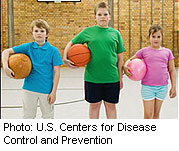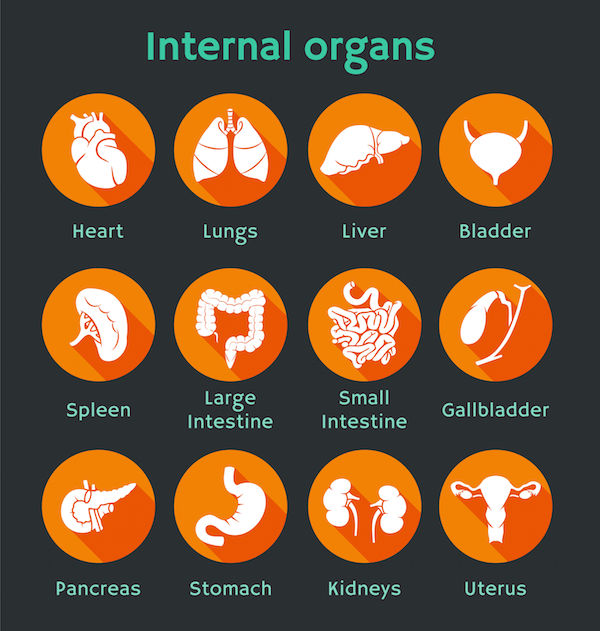
TUESDAY, April 26 (HealthDay News) — Neither vitamin E nor the diabetes medication metformin worked any better than a placebo in treating fatty liver disease in children, according to new research.
Fatty liver disease is an increasingly common, yet not well-known, disorder that can lead to very serious complications, such as cirrhosis of the liver. In the United States, as many as 20 percent of adults and 5 percent of children have the disorder, which is strongly tied to obesity, according to the American College of Gastroenterology.
It had been hoped that vitamin E or metformin might help kids battle fatty liver disease. But when the researchers compared the two treatments to placebo on their ability to improve the results of a blood test that measures liver health, they found no statistically significant difference.
However, when the researchers compared the results of a liver biopsy done at the start of the study and at the end of the study, vitamin E did show promise in improving a more progressive form of the illness, called non-alcoholic steatohepatitis (NASH).
“Fatty liver disease is a common disease in children that can have important health consequences. There are currently therapies being tested in various ways, and I have reason to believe that vitamin E shows promise in helping to resolve [NASH] in children who have it,” said the study’s lead author, Dr. Joel Lavine, chief of gastroenterology, hepatology and nutrition at Columbia University Medical Center in New York City.
In fatty liver disease, fat collects in the liver. The disease is associated with overweight and obesity, though not everyone who has fatty liver disease is overweight, according to Lavine. It usually doesn’t cause any symptoms, and for most people who have it, it likely won’t cause any serious health problems.
However, some people who have the disorder progress to NASH, which involves an inflammation and scarring in the liver that may affect the function of this vital organ. But, right now, there’s no easy way to tell who might progress to more serious disease. The only way to confirm NASH is through a liver biopsy, which is an invasive procedure. A liver function test known by the initials ALT can provide clues to the health of the liver, but can’t confirm NASH definitively.
Lifestyle changes, including losing weight, are the current recommended treatment for fatty liver disease.
The current study compared two potential treatments for fatty liver disease in children: vitamin E and the type 2 diabetes medication metformin. Lavine and his colleagues randomly placed 173 children into one of three treatment groups, including a placebo group. Children in the vitamin E group took 800 international units daily, and those in the metformin group took 1,000 milligrams daily for almost two years.
All of the children involved in the study were between the ages of 8 and 17, and all had biopsy-confirmed fatty liver disease. They also had elevated ALT levels, suggesting that some liver damage might have already occurred. Forty-two percent of the children had already been diagnosed with NASH.
Because it’s non-invasive and the more commonly used test to measure the progress of fatty liver disease, the researchers chose to measure ALT levels as their primary assessment.
They found no statistically significant difference between children taking either vitamin E, metformin or placebo, based on ALT levels.
However, when the researchers looked at biopsies taken at the start of the study, and at the end of the study in children with NASH, 58 percent of the vitamin E group no longer had NASH compared to 28 percent of the placebo group. Forty-one percent in the metformin group no longer had NASH, according to the study.
Results were published in the April 27 issue of the Journal of the American Medical Association.
“Fatty liver disease is a potentially significant problem in children and adolescents. But, we don’t have a medication at present that we can say changes the prognosis,” said Dr. Benjamin Shneider, medical director of hepatology at Children’s Hospital of Pittsburgh. “Vitamin E is probably safe, but it’s difficult with the data at hand to recommend it. The primary end point of the study wasn’t met, and although they saw some intriguing changes with vitamin E, it’s hard to know if those changes lead to long-term improvement.”
Right now, a healthy lifestyle remains the best defense against fatty liver disease, Shneider said.
“There’s no magic bullet,” he added. “Lifestyle changes are the treatment. The good news for children is that they have an opportunity to outgrow their obesity. If they cut back on their food so they don’t gain weight and get more exercise, as they grow, they’ll outgrow their obesity. It’s easier than when you’re an adult.”
Lavine agreed that lifestyle changes can help. “If children ate appropriately and played vigorously, the way they did a few decades ago, this problem would be a lot less common and worrisome,” he said.
More information
Learn more about fatty liver disease from the American College of Gastroenterology.

